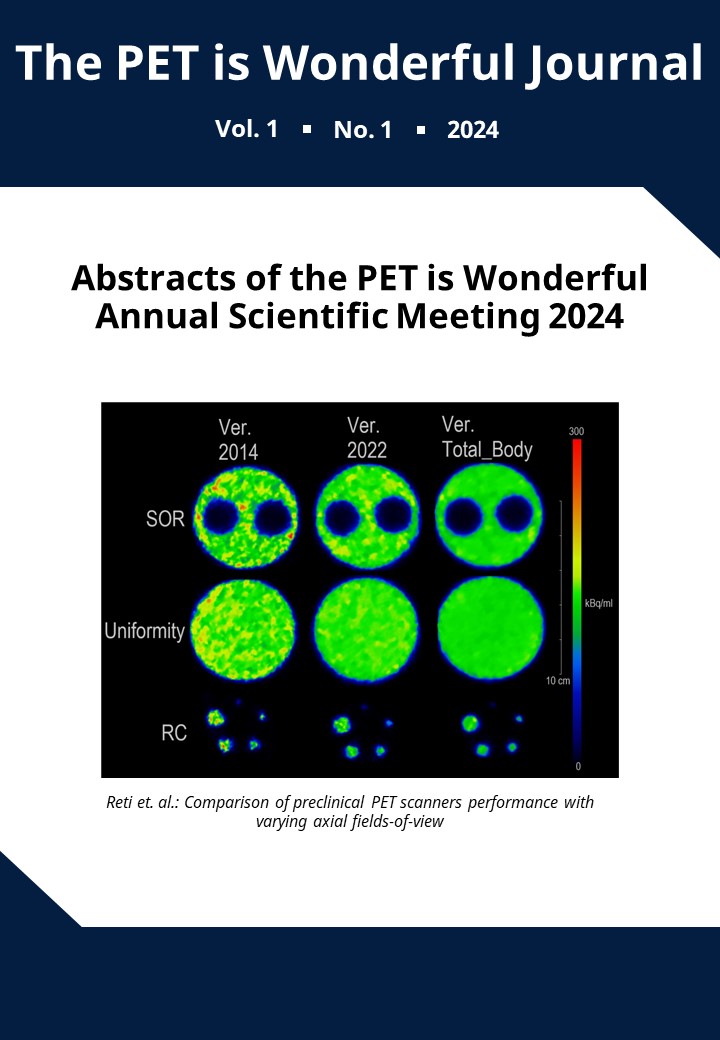Using total-body PET to investigate relationships between excretory organs time activity curves and the metabolite fraction for [18F]SynVesT-1
DOI:
https://doi.org/10.2218/piwjournal.9968Abstract
Accurate quantification of dynamic PET data using kinetic modelling requires assessment of the metabolism of the tracer to obtain the quantity of unchanged parent tracer in the blood. Several image derived input functions methods have been demonstrated to be effective for kinetic modelling; however, currently no image derived metabolite correction method exists. Finding an image derived metabolite correction would remove the need for invasive blood sampling.
This study uses 7 full body 18F-SynVesT-1 total body mouse scans. Initially, the time activity curves (TACs) for a range of organs including the liver, kidney and bladder were studied. Factor analysis (FA) was investigated to accurately separate contributions from the kidney – cortex, medulla and collecting duct. Following this, the relationships between each of the organ TACs and the parent plasma fraction (PPf) was investigated.
FA analysis successfully discriminates between contributions from the cortex, medulla and collecting duct of the kidneys. In the context of total body scans, FA removes the need for manual drawing of volumes of interest allowing for more consistency amongst studies. By separating out these regions, a relationship between the kidney medulla and the metabolites also came to light.
In addition, the average of the seven bladder time activity curves against the plasma parent fraction [Figure 1] shows a potential relationship between the excretion of the tracer and its metabolism. Combining excretory organ relationships with the parent fraction and potentially liver data opens the possibility for a model to be produced to fit a metabolite curve when we have access to a total body PET scan.
While this research is in its early stages, it has shown relationships between excretory organ TACs and the metabolite fraction. This has the potential to allow for metabolite correction models to be created directly from the image data. Model architectures are under investigation.
Please click on the 'PDF' for the full abstract!
Downloads
Published
Issue
Section
License
Copyright (c) 2024 Bernadette Andrews, Paul S. Clegg, Adriana A. S. Tavares, Catriona Wimberley

This work is licensed under a Creative Commons Attribution 4.0 International License.





